Weather instruments have already been around for a couple of centuries. Millennia ago, there were techniques that were being used to get a grasp on the current weather. The Shang dynasty, for example, used to measure the weight of a bar of charcoal to determine the humidity level. If it was heavy, the humidity was determined to be high.
The first weather real instruments were invented in the 15th century. A more scientific approach for measuring humidity was created during that century: the hygrometer. The inventor of this weather measurement device was none other than Leonardo Da Vinci, the famous Italian inventor and artist. Probably most known for the Mona Lisa, Da Vinci invented a range of scientific and war-related items during his lifetime.
During the same century, the Italian architect and author Leon Battista Alberti created the first anemometer, a device that measures wind speed. Alberti’s design didn’t change much over the years, in contrast to other instruments. Nowadays, it’s almost always accompanied by a wind vane, which has been around since it was invented in Ancient Greece during the first century B.C.
The rain gauge was invented in 1441 by the Korean ruler Kim Sejong and his son. The thermometer and the barometer (a device that measures air pressure) were both invented in Italy during the 16th and 17th centuries.
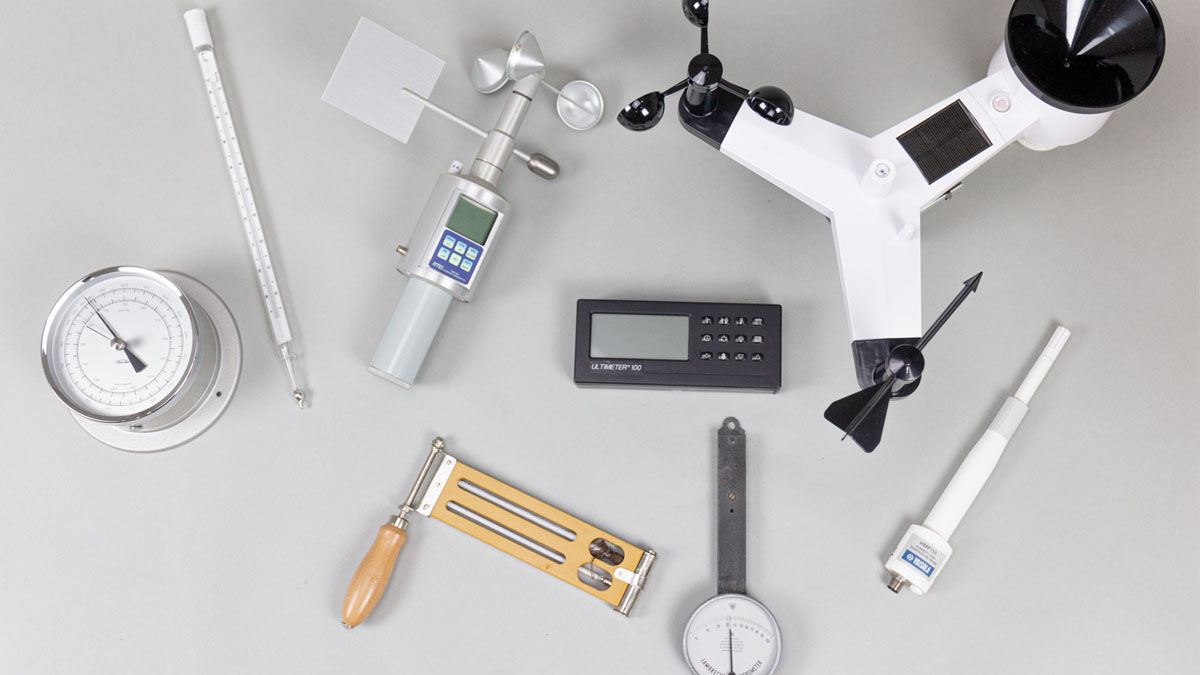
Weather Instruments are Evolving
Weather instruments have been improving since their inception. Over the years, scales for weather parameters were created: Andrus Celsius invented the Celsius scale, Sir Francis Beaufort was the inventor of the Beaufort scale, and Gabriel Fahrenheit brought the Fahrenheit scale into existence. From now on, measurements could be recorded. That’s why most weather measurement series only goes back to around 1850.
The past century was mainly marked by digitalization. Instead of analog devices, more and more digital devices were introduced. These devices made it very easy to automatically read weather data on a regular basis and store them. Even though digital weather instruments are taking over the market rapidly, some institutions keep using analog devices for fear of introducing measurement discrepancies between past and current measurements.
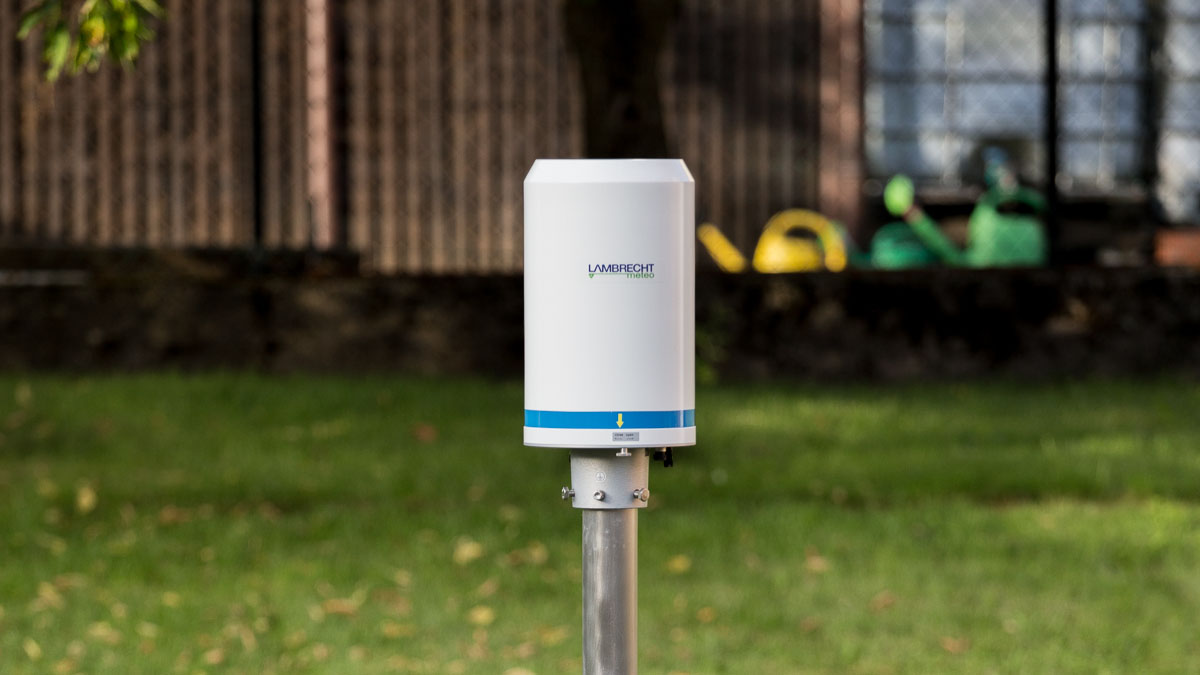
The most commonly used Weather Instruments
There are many types of weather instruments that are currently used all over the world. Measurements of these devices are shared across the internet, and weather models depend on this data to make accurate weather forecasts. But which weather parameters are most commonly measured? And which weather instruments are used for that?
Measuring Temperature with the Thermometer
The temperature has always been one of the most important weather parameters. Temperature is measured most commonly in Celsius (°C) or Fahrenheit (°F). Thermometers come in a bunch of types. Standard analog thermometers use a liquid inside a thin glass tube. Mercury was often used. When temperatures are high, this liquid expands and rises resultantly. The temperature could be determined by reading the Celsius/Fahrenheit value corresponding to the upper boundary of the liquid. This type of thermometer has become the symbol for temperature.
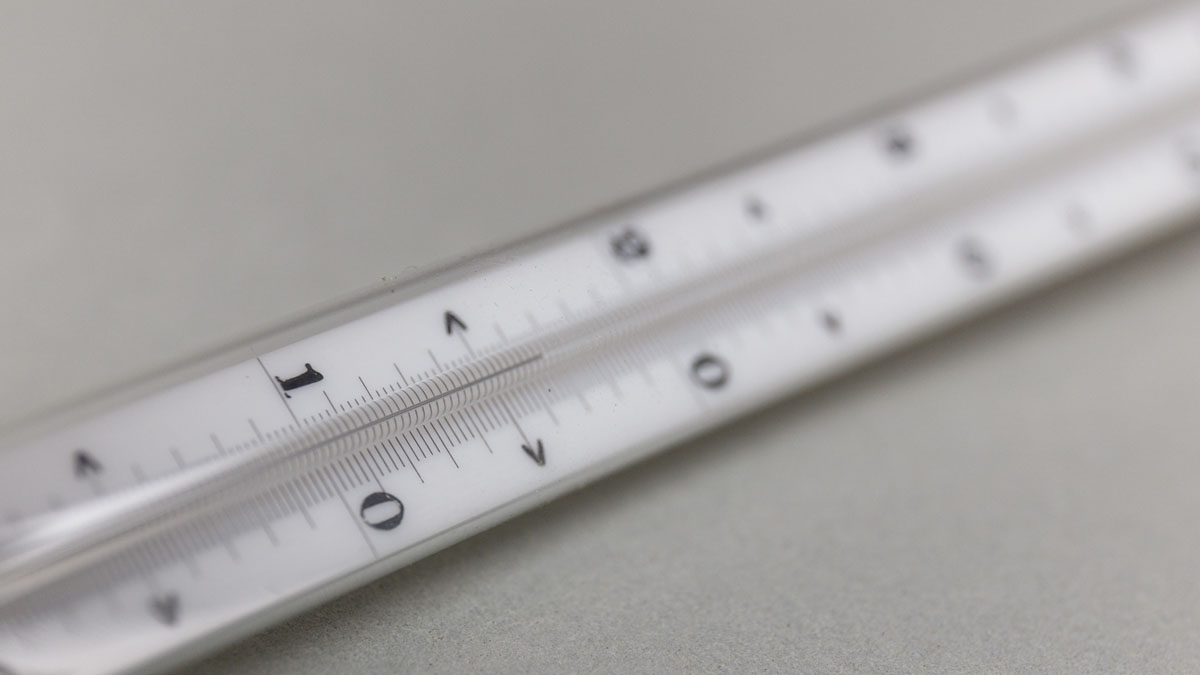
The digital counterpart is more complicated. In short, a digital thermometer measures current and uses it to calculate the temperature using the ideal gas law. The temperature can be automatically read and transported in numerical format to a database or display of some sort.
The thermometer is one of the most, if not the most, used type of weather instrument nowadays. Digital thermometers are relatively cheap and are used in weather stations and medical equipment, among other things.
The Barometer for measuring Air Pressure
Air pressure plays a vital role in forecasting weather. Low air pressure is generally associated with rainy and windy weather, while high pressure indicates calm and dry conditions. In essence, air pressure describes the force that the air in a vertical column exerts onto the earth due to the gravitational force of the earth. Pressure is generally expressed in Pascals (Pa); for air pressure, hectopascals (hPa, 1hPa = 100 Pa) and millibars (Mbs, 1Mbs = 1 hPa) are most commonly used.
Like the thermometer, the barometer has an analog and a digital version. The most common analog barometer is of the aneroid type. This type of barometer consists of a small box with a spring inside. When the air pressure changes, the box expands or contracts slightly. This difference in size drives a needle that indicates the current air pressure.
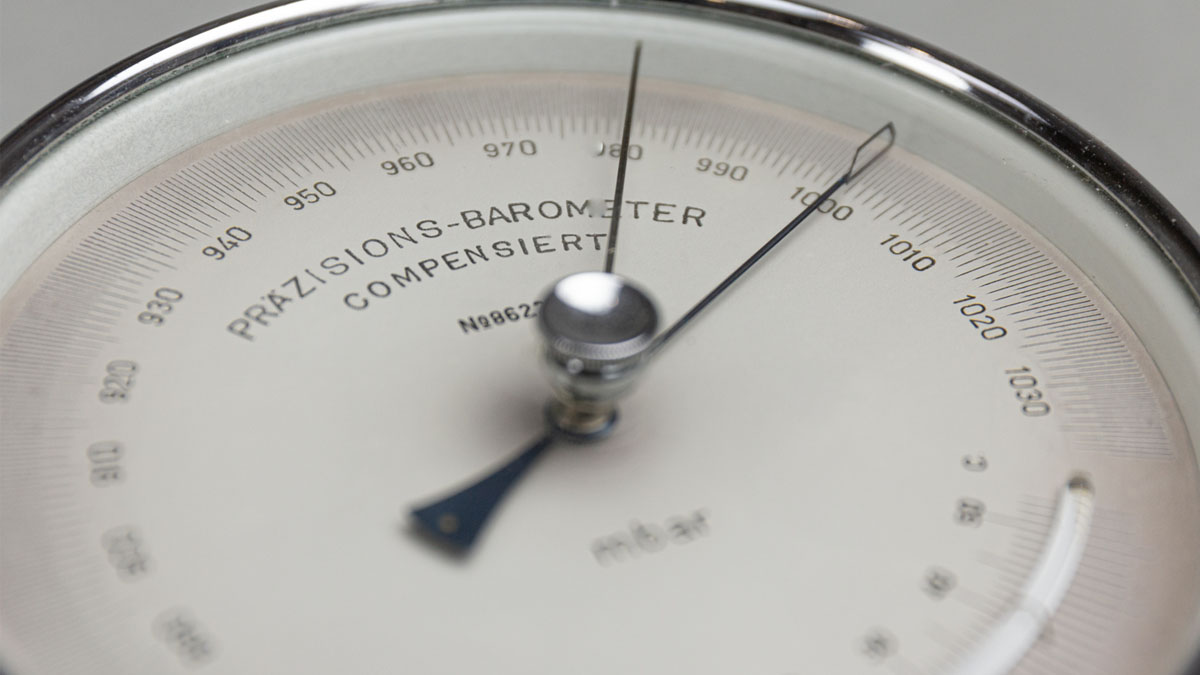
Digital barometers or MEMS barometers are microscopic devices that measure the current air pressure. These devices are used in a variety of applications, including weather stations and smartphones, where they are used to make an estimate of altitude. Due to the diverse applications in popular products, the barometer is one of the most used weather instruments.
Because the air pressure decreases with an increase in altitude, air pressure can be an indication of height; it’s not an exact science since air pressure at sea level generally ranges between 950hPa and 1050hPa. This correlation between air pressure and altitude also means that weather stations have to be calibrated if they’re not located at sea level (to correct for the altitude).
The Hygrometer
The hygrometer is one of the oldest weather instruments. They have been used for centuries to measure the amount of water vapor in the air. In contrast to the other weather instruments on this list, humidity is mostly expressed on a relative scale. The scale covers the values 0% to 100%. When it’s misty, for example, it’s likely that the hygrometer will display values close to 100%.
The reason for using relative humidity (expressed in %) in contrast to specific humidity (volume of water in a certain volume of air) is simple: warm air can hold more water vapor, and a misty day in summer would require higher specific humidity than in winter. Specific humidity is thus not so intuitive to use on a daily basis.
There are a lot of hygrometer types. Like with most weather instruments, there are analog and digital devices that are used most frequently nowadays. Most analog hygrometers work by lowering the temperature of an object and measuring at what temperature condensation on that object starts to take place. This temperature is called the dewpoint temperature and can be used to derive relative humidity.
The Anemometer for measuring Wind
The anemometer is a device that is capable of measuring the speed of the wind, expressed in km/h (mi/h) or on the Beaufort scale. Most anemometers are also equipped with a wind vane to measure the direction of the wind. At the same time, all of the above weather instruments are mounted at 1.5m (4.9ft) or 2.0m (6.6ft) for gathering weather data that conforms to the international standards laid out by the WMO (World Meteorological Organization). The anemometer has to be mounted at 10m (33ft) above ground level.
There are a couple of types of anemometers; interestingly enough, there aren’t any viable fully digital options yet. Most anemometers rely on the basic design invented a couple of centuries ago. That’s also why they are one of the most expensive weather instruments.
The cup anemometer is probably the most well-known. This type consists of 3 or more cups that spin around an axis. The number of rotations per time unit can be converted into wind speed. Back in the day, the number of rotations had to be counted manually, luckily, there are now electronic devices in place that do this for us.
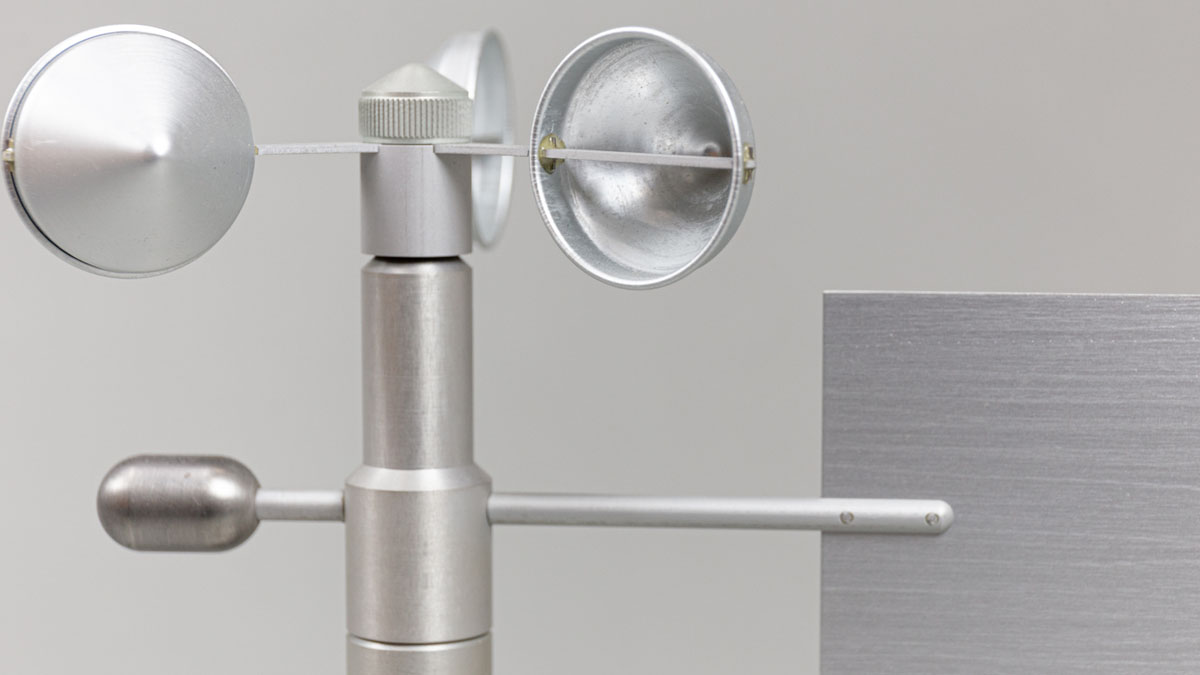
Another type of anemometer is the vane anemometer; it’s relatively similar to the cup anemometer. The difference is that the axis is now located horizontally (in the direction of the wind). At the end of this axis are blades that turn when the wind hits them, comparable to a wind turbine. The obvious drawback to this type is that it has to be able to move to turn straight into the wind direction.
Weather instruments have been around for a while now and have been improving since the day they were introduced. Weather instruments are used in a variety of sectors, not limited to the weather itself. The most used weather instruments are barometers to measure air pressure, thermometers to measure temperature, hygrometers for measuring relative air humidity, and anemometers to measure wind speed. With the development of digital technology, measurements from these weather instruments can be automatically read and shared across the world.
In the next articles, we will get to know measuring instruments and other exciting things related to weather measurement in more detail. Stay tuned.
SEE ALSO: